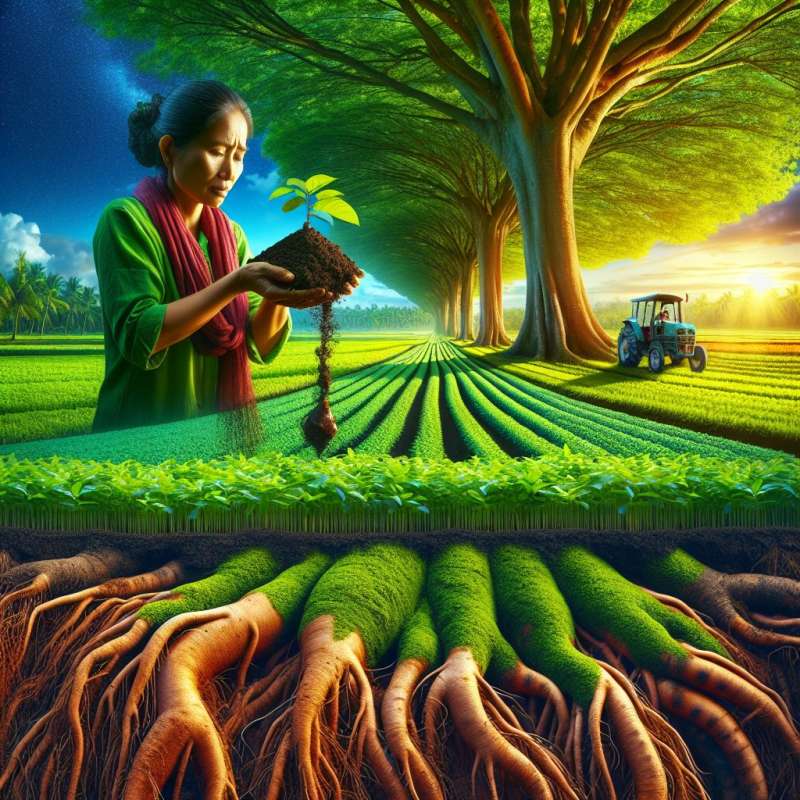
Understanding Agroforestry
Agroforestry combines agriculture and forestry to create integrated and sustainable land-use systems. It involves trees alongside crops and/or livestock, enhancing biodiversity and ecosystem services.
Carbon Sequestration Boost
Trees in agroforestry systems capture atmospheric carbon effectively, storing it in biomass and soil. This carbon sequestration is key in mitigating climate change by reducing greenhouse gases.
Soil Quality Improvement
Agroforestry practices improve soil structure and fertility. Deep-rooted trees enhance nutrient cycling and reduce soil erosion, leading to increased carbon storage and resilience to extreme weather.
Biodiversity Hotspots
Agroforestry systems support a diverse range of species by providing various habitats and food sources. This diversity can stabilize ecosystems and improve productivity.
Microclimate Regulation
Tree canopies in agroforestry systems regulate microclimates. They moderate temperatures, increase humidity, and reduce wind speed, benefiting crops and reducing the need for irrigation.
Economic Resilience
Agroforestry offers multiple income streams from timber, fruit, nuts, and livestock products. This diversification can protect farmers from market and climate volatilities.
Policy and Challenge
Despite benefits, agroforestry adoption is slow due to lack of policy support and awareness. Incentives and education could accelerate integration for climate change mitigation.Ancient Agroforestry Insight
Ancient Mayans practiced agroforestry 3,000 years ago, enhancing soil fertility and crop resilience, long before modern techniques were developed.
What does agroforestry integrate?
Aquaculture and tree farming
Agriculture and forestry
Horticulture and crop rotations
Company